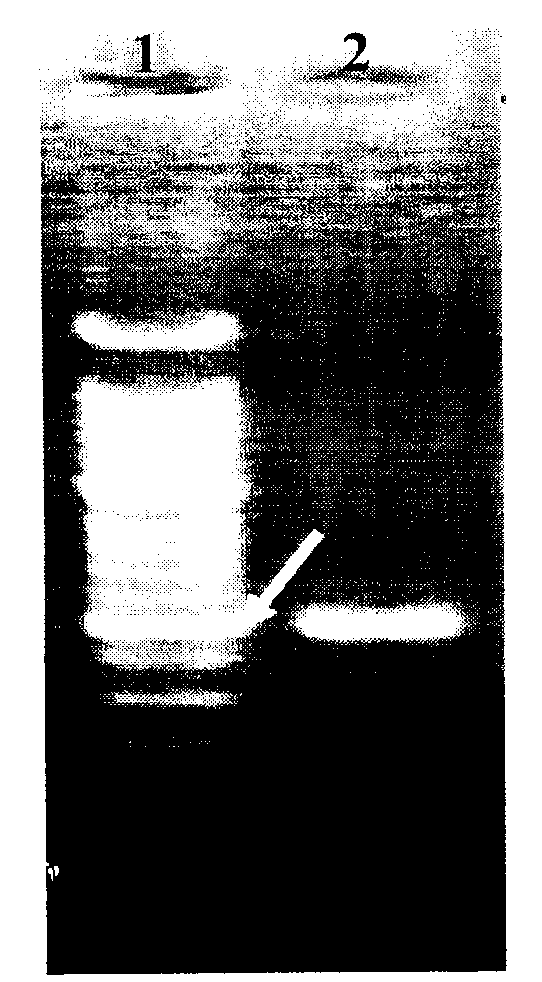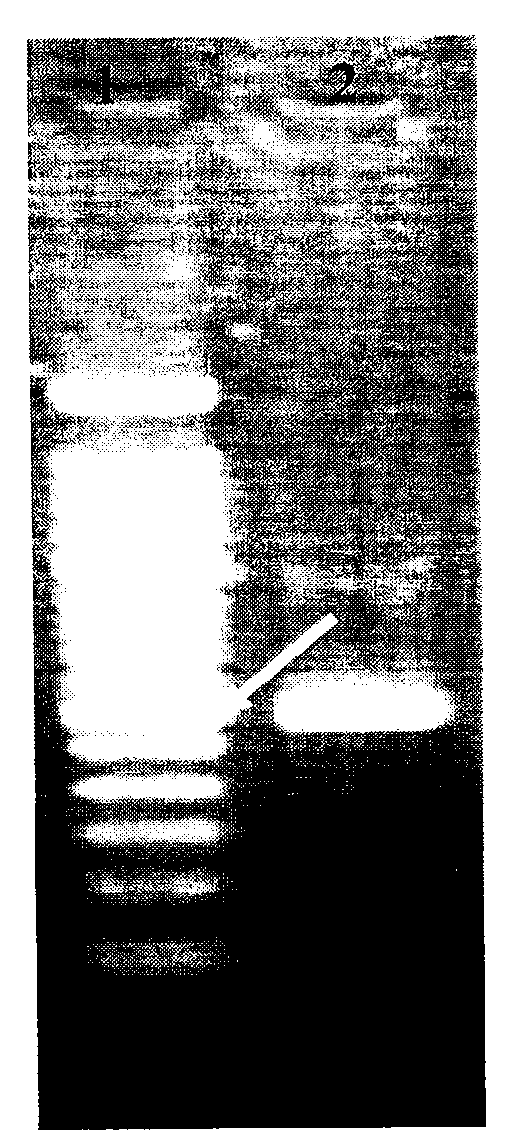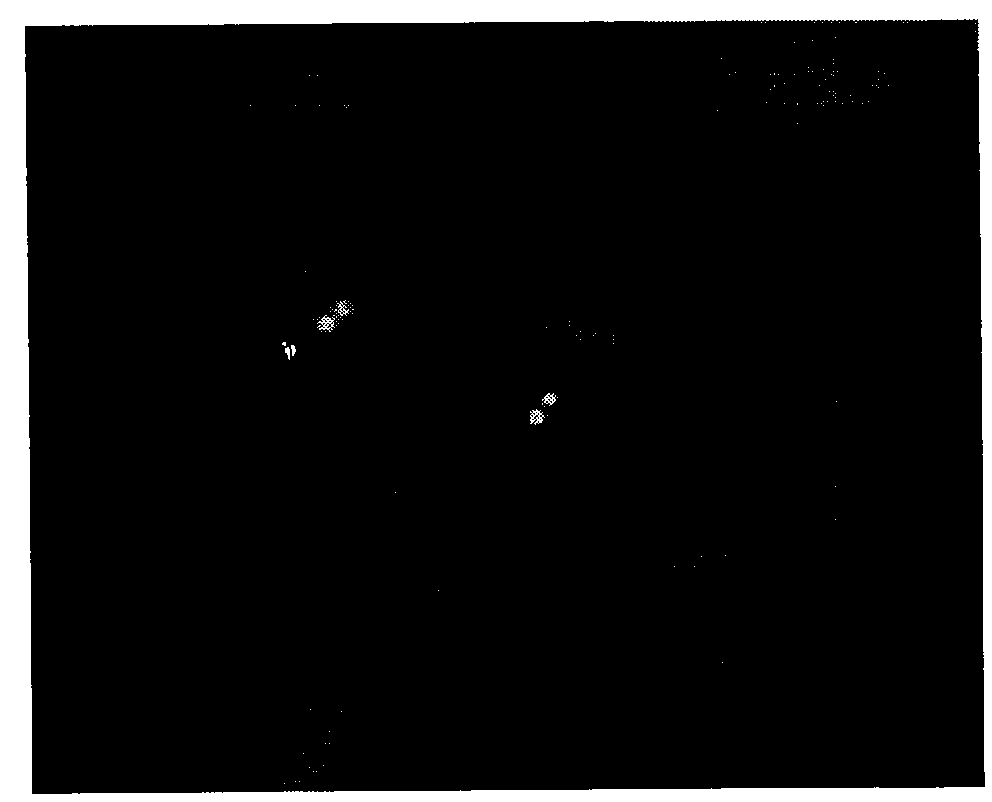Preparation method of non-small cell lung cancer molecular marker related probes and application thereof
A technology of probes and gene probes, which is used in the preparation and application of non-small cell lung cancer molecular marker-related probes, can solve the problems of strong side effects, poor sensitivity of NSCLC, and inability to perform radical surgery. Achieve the effect of simple operation
- Summary
- Abstract
- Description
- Claims
- Application Information
AI Technical Summary
Problems solved by technology
Method used
Image
Examples
Embodiment 1
[0047] Embodiment 1: Preparation of EGFR gene probe
[0048] (1) Primer design and clone screening: EGFR gene is located in the 7p12 segment of human chromosome. NCBI Mapview database searches all clones containing EGFR gene, and screens out the clone containing this gene, numbered RP11-815K24.
[0049] (2) Cloning culture and identification: purchase the clone RP11-815K24, take 10 μl of the cloning bacteria solution and add it to 5ml TB culture solution (chloramphenicol resistance), and shake the bacteria in a shaker at 37°C for 8 to 12 hours; Add all the solution to 500ml TB culture solution (chloramphenicol resistance), shake the bacteria in a shaker at 37°C for 8-12 hours; use the upstream primer 5'-ACTCCAGACATCTTTCCATCTGC-3' and the downstream primer 5'-AATCATTGCTCTCATGAGTGGTG for the bacterial solution -3' was subjected to PCR amplification, and the amplification conditions were: 95° C. for 5 minutes; (94° C. for 30 seconds, 56° C. for 30 seconds, 72° C. for 45 seconds) ...
Embodiment 2
[0069] Embodiment 2: Preparation of ERCC1 gene probe
[0070] (1) Primer design and clone screening: ERCC1 gene is located in the 19q13 segment of human chromosome. NCBI Mapview database searches all clones containing ERCC1 gene, and screens out the clone containing this gene, numbered RP11-752G9.
[0071] (2) Cloning culture and identification: purchase clone RP11-752G9, take 10 μl of clone bacteria solution and add it to 5ml TB culture solution (chloramphenicol resistance), shake the bacteria in a shaker at 37°C for 8 to 12 hours; Add all the solution to 500ml TB culture solution (chloramphenicol resistance), shake the bacteria in a shaker at 37°C for 8-12 hours; use the upstream primer 5'-GCAATGAGCCGAG for the bacteria solution
[0072] ATAGAA-3' and downstream primer 5'-TGGCTAGCCCATTACTCTA-3' were amplified by PCR, the amplification conditions were: 95°C for 5 minutes; (94°C for 30 seconds, 56°C for 30 seconds, 72°C for 45 seconds) × 40 cycles; 72 °C for 10 minutes. The ...
Embodiment 3
[0092] Example 3: Preparation of fluorescence in situ hybridization detection kit for non-small cell lung cancer
[0093] Take 10 servings / box as an example.
[0094] (1) Preparation of hybridization solution
[0095] Put the labeled probes in order, dissolve the probes first. Use 1 μl of sterilized purified water to dissolve the dry powder of the EGFR gene probe prepared by the method in Example 1, and mix thoroughly. Then another 1 μl of sterilized purified water was dissolved in the dry powder of the ERCC1 gene probe prepared by the method in Example 2, and thoroughly mixed. Prepare the fluorescently labeled probe mixture according to the following scheme:
[0096]
[0097] Prepare the hybridization solution according to the following scheme:
[0098]
[0099] (2) DAPI counterstain preparation
[0100] Anti-fading solution: The whole process must be protected from light. Dissolve 10mg of p-phenylenediamine in 1ml of PBS, adjust the pH to 9.0, add 9ml of glycerin,...
PUM
 Login to View More
Login to View More Abstract
Description
Claims
Application Information
 Login to View More
Login to View More - R&D Engineer
- R&D Manager
- IP Professional
- Industry Leading Data Capabilities
- Powerful AI technology
- Patent DNA Extraction
Browse by: Latest US Patents, China's latest patents, Technical Efficacy Thesaurus, Application Domain, Technology Topic, Popular Technical Reports.
© 2024 PatSnap. All rights reserved.Legal|Privacy policy|Modern Slavery Act Transparency Statement|Sitemap|About US| Contact US: help@patsnap.com










